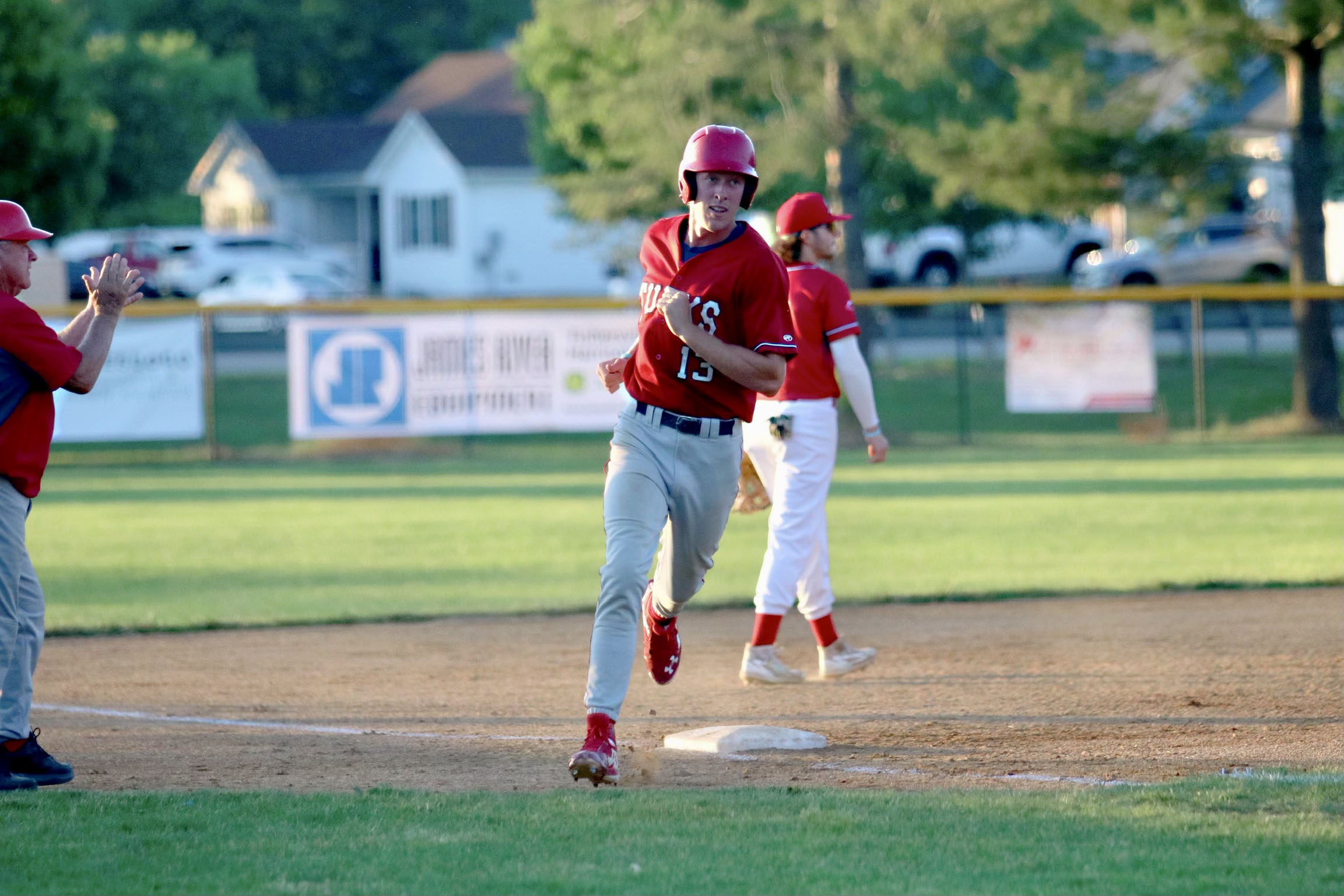 Thursday, June 16, 2022
Thursday, June 16, 2022
Shelton Moss
HARRISONBURG, Va. — It is often said that hitting a baseball is the hardest thing to do in sports. Pitching isn’t so easy, either.
But to excel as a hitter and pitcher for one of the best Division II programs in the nation seems borderline impossible, right?
Meet Mitch Farris. The rising junior at Wingate is the ultimate two-way player, leading the Bulldogs in several offensive categories while also doubling his efforts as one of the team’s most reliable pitchers. He has taken his talents to Harrisonburg this summer, hoping to improve upon what is already one of the most unique skill sets in the country.
“I’ve always done both,” Farris said of his development as a two-way player. “Growing up, I was more of a hitter, and then a thrower on the mound. I wouldn’t call myself a pitcher. I just threw it over the plate.”
This past season at Wingate, Farris batted .367 in 39 games. He paced the Bulldogs with 49 RBI, 19 home runs and a .673 slugging percentage. And he did all that while posting a team-best 1.70 ERA across 53.0 innings on the mound.
“I started out as a reliever,” Farris said. “I was kind of the fourth starter, so if someone got hurt in the rotation, I’d fill in. I worked my way into the starting rotation role at the end of the year.”
In a South Atlantic Conference Tournament game against Catawba on May 1, Farris tossed a three-hit complete-game shutout. Three weeks later in the NCAA Division II Southeast Regionals, he threw another shutout against Young Harris, this time holding the opposition to just one hit.
A native of Palm Harbor, Florida, Farris attended Palm Harbor University High School, located about 45 minutes west of Tampa. During his sophomore season, Farris tore his ACL playing football. As he rehabbed his way back, the first thing he could do was throw, so he used that time to learn how to pitch.
The Tampa area is rich in baseball talent. Farris would frequently play conference games against teams with Power Five pitchers, and the high level of competition helped him improve as a player. But his only Division I offer was from Saint Louis; most of his interest on the recruiting trail came from Division II programs and some junior colleges in Florida. Farris took recruiting visits to several smaller universities, but it was Wingate who stood out to him the most.
“On the visits, you kind of just show up and the coaches take you around,” Farris recalled. “It feels a little weird and uncomfortable. But when I went on the visit to Wingate, it didn’t feel uncomfortable. It felt right at home. I could see myself fitting in.”
Situated 30 miles south of Charlotte, Wingate has become a Division II powerhouse, winning the national championship in 2021. The program is led by head coach Jeff Gregory, who was an assistant coach with the Turks in 2005, and has since remained great friends with Turks president and head coach Bob Wease.
This year, the Bulldogs won a school-record 48 games and made the NCAA Tournament for the second straight year, making Farris’ performance all the more impressive.
“Wingate has a good history of winning, and the coaches were nice and personable men,” Farris added. “They weren’t trying to sell you on anything, they were just straight up. I knew they had a good program. They aren’t as flashy as Division I, but they get the job done.”
Gregory had always envisioned Farris being a two-way player. One of Farris’ teammates, Hunter Dula, was also a two-way player, and he took the young freshman under his wing, helping him learn the ropes of being a hitter and pitcher at the same time.
“As a two-way, you can’t do everything that the position players and pitchers do, so you have to take what’s most important out of both, because you don’t have time to go into detail,” Farris said. “What’s different with being a two-way is learning what your body likes and what works well recovery wise.”
Being a two-way player involves a great deal of preparation. As a hitter, Farris will normally take batting practice and hit off the tee. If he has to pitch that day, he’ll skip fielding work and will focus solely on pitching. As you might suspect, the added workload does take a physical toll, particularly on the lower body.
“The main thing is your legs,” Farris noted. “You would expect it to be the arm, but it’s not. When you’re pitching, you’re on your feet, driving on the mound every pitch. After that, you have to go in and hit. You don’t get a breather sometimes. That’s kind of the first thing to go when you get tired — it’s the legs not being underneath you.”
And yet, Farris still manages to excel at his craft. Offensively, he ended the year on a five-game hitting streak. Over his last six appearances on the mound — 30 ⅓ innings in total — he did not give up a single run.
Gregory and Wease continue to maintain a great relationship, and Wingate typically sends a handful of talented players to Harrisonburg every summer. In 2021, the Turks’ roster included Wingate catcher Logan McNeely and pitcher Mac Callari. This year, Bulldog infielder Seaver King is also playing for Harrisonburg. King affectionately referred to Farris as the “Shohei Ohtani of college,” a moniker that his teammate shies away from.
“I’m not a big spotlight guy,” Farris said with a laugh. “I like laying low.”
Farris is using the summer to work on making more consistent contact as a hitter. On the pitching side, he’s focused more on throwing strikes than throwing hard.
“I’m not a guy that’s gonna throw it by people,” Farris admitted. “I’m trying to continue to throw all pitches for strikes and locate it. I’m also trying to gain weight, get stronger and throw harder. But I’m not gonna sacrifice throwing harder for location.”
More than anything, Farris is here to have fun playing baseball.
“I’m just trying to enjoy the summer. If you’re not having fun, you’re going to burn yourself out.”

